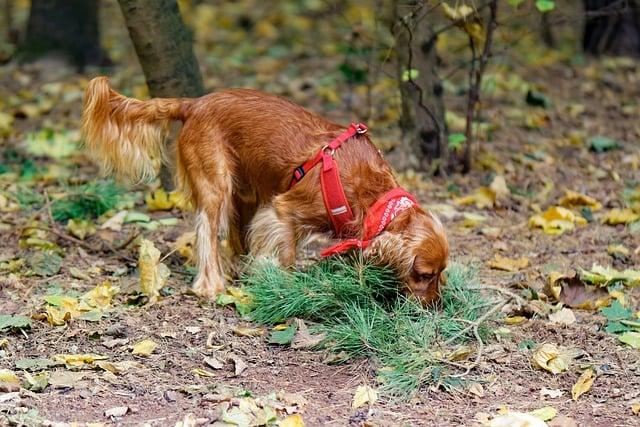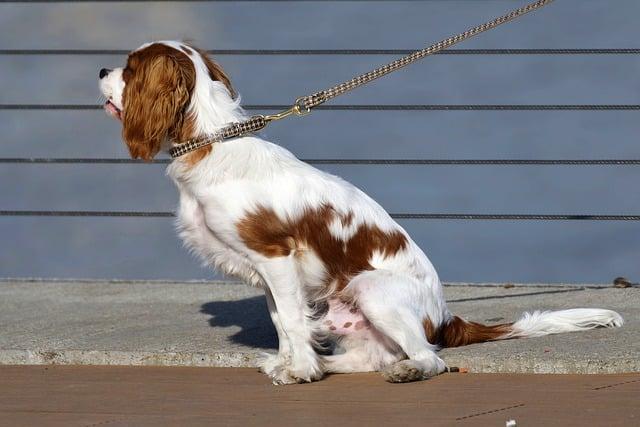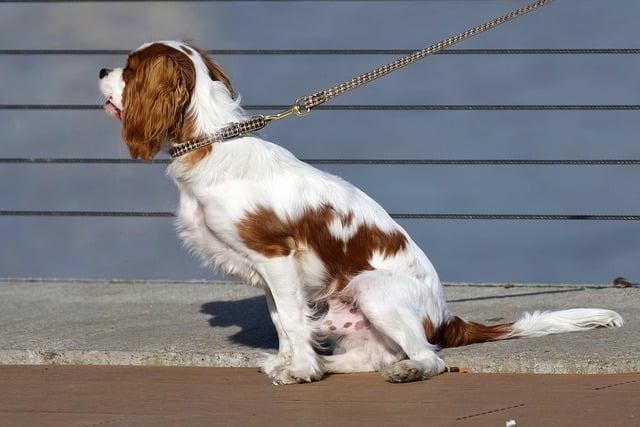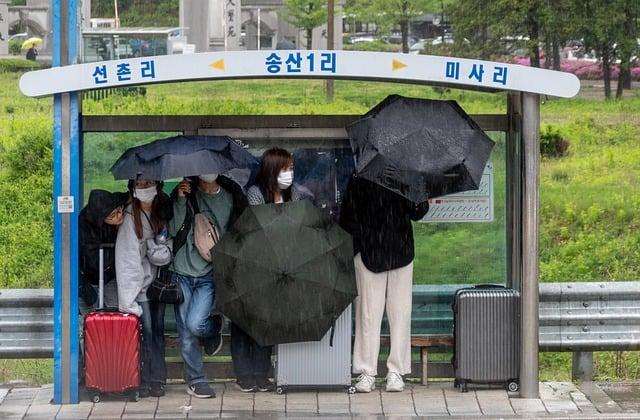When Sarah adopted Max, a spirited rescue dog, she was thrilled. But soon, his aggressive behavior towards other dogs turned walks into a nightmare. Frustrated and worried, she sought help from a professional trainer. Together, they implemented positive reinforcement techniques, gradually transforming Max’s reactions. With patience and consistency, Sarah learned to read his cues, fostering a bond built on trust. If you’re facing similar challenges, remember: with the right guidance and dedication, you can help your dog become the loving companion you envisioned.
Contents
- Understanding the Root Causes of Aggression in Dogs
- Effective Training Techniques to Curb Aggressive Behavior
- Creating a Safe and Positive Environment for Your Dog
- When to Seek Professional Help for Aggressive Behavior in Dogs
- Q&A
Understanding the Root Causes of Aggression in Dogs
To effectively address aggressive behavior in dogs, it is crucial to first identify the underlying causes. Various factors can contribute to aggression, including **fear**, **territorial instincts**, and **lack of socialization**. Understanding these root causes allows pet owners to tailor their approach, ensuring a more effective resolution to the issue.
Fear-based aggression often stems from a dog’s past experiences or lack of exposure to certain stimuli. Dogs that have been abused or inadequately socialized may react aggressively when they feel threatened. Recognizing signs of fear, such as cowering or growling, is essential. By creating a safe environment and gradually exposing the dog to new experiences, owners can help alleviate these fears and reduce aggressive tendencies.
Territorial aggression is another common cause, where dogs feel the need to protect their home or family. This behavior can manifest when strangers approach the property or when another animal enters their perceived territory. To manage this type of aggression, it is important to establish clear boundaries and provide consistent training. Techniques such as desensitization and positive reinforcement can help dogs learn to remain calm in the presence of perceived intruders.
Lastly, a lack of socialization can lead to aggressive behavior, as dogs may not know how to interact appropriately with other animals or people. Early and ongoing socialization is vital for developing a well-adjusted dog. Engaging in controlled playdates, obedience classes, and exposure to various environments can significantly improve a dog’s social skills. By addressing these root causes, owners can take meaningful steps toward reducing aggression and fostering a more harmonious relationship with their canine companions.
Effective Training Techniques to Curb Aggressive Behavior
Addressing aggressive behavior in dogs requires a combination of understanding, patience, and effective training techniques. One of the most impactful methods is **positive reinforcement**. This approach involves rewarding your dog for displaying calm and non-aggressive behavior. By offering treats, praise, or playtime when your dog reacts positively in situations that previously triggered aggression, you reinforce the desired behavior. Over time, your dog will associate these situations with positive outcomes, reducing the likelihood of aggressive responses.
Another effective technique is **desensitization**. This method gradually exposes your dog to the stimuli that provoke aggressive behavior in a controlled manner. Start at a distance where your dog feels safe and gradually decrease that distance over time, rewarding calm behavior along the way. This process helps your dog become more comfortable with the triggers, ultimately leading to a more relaxed response. Remember to be patient; desensitization can take time, but consistency is key to success.
Incorporating **obedience training** into your routine can also significantly curb aggressive tendencies. Teaching your dog basic commands such as “sit,” “stay,” and “leave it” not only establishes you as the leader but also provides your dog with the tools to respond appropriately in various situations. Regular training sessions, combined with positive reinforcement, create a structured environment that helps your dog feel secure and less prone to aggression.
Lastly, consider seeking the guidance of a **professional dog trainer or behaviorist**. These experts can provide personalized strategies tailored to your dog’s specific needs and behaviors. They can help identify triggers and develop a comprehensive training plan that incorporates the techniques mentioned above. Working with a professional ensures that you are using the most effective methods and can provide support throughout the training process, making it easier to achieve lasting results.
Creating a Safe and Positive Environment for Your Dog
Creating a nurturing atmosphere for your dog is essential in addressing aggressive behavior. A safe environment allows your pet to feel secure, reducing anxiety and the likelihood of aggression. Start by establishing a designated space where your dog can retreat when feeling overwhelmed. This area should be quiet, comfortable, and stocked with their favorite toys and blankets. By providing a sanctuary, you help your dog learn to self-soothe and manage stress effectively.
Consistency is key in fostering a positive environment. Dogs thrive on routine, so ensure that their daily schedule for feeding, walks, and playtime remains stable. This predictability helps alleviate anxiety and builds trust between you and your pet. Additionally, consider implementing clear boundaries and rules within your home. For example, if certain areas are off-limits, make sure your dog understands these restrictions to avoid confusion and frustration.
Socialization plays a crucial role in shaping your dog’s behavior. Gradually introduce your dog to various environments, people, and other animals in a controlled manner. This exposure helps them learn appropriate social cues and reduces the likelihood of aggressive reactions. Always supervise interactions, especially in the beginning, and reward positive behavior with treats and praise. This reinforcement encourages your dog to associate new experiences with positive outcomes.
Lastly, prioritize mental and physical stimulation to keep your dog engaged and content. Boredom can lead to frustration and aggressive tendencies, so incorporate a mix of activities into their routine. Consider activities such as interactive toys, puzzle games, and regular exercise. Engaging your dog’s mind and body not only strengthens your bond but also promotes a calmer demeanor, making it easier to manage any aggressive tendencies that may arise.
When to Seek Professional Help for Aggressive Behavior in Dogs
Recognizing when to seek professional help for your dog’s aggressive behavior is crucial for the safety of both your pet and those around them. If your dog exhibits signs of aggression, such as growling, snapping, or biting, it’s essential to take these behaviors seriously. Ignoring these warning signs can lead to more severe incidents, potentially resulting in harm to other animals or people. Early intervention is key to addressing these issues effectively.
Consider consulting a professional if your dog’s aggression is triggered by specific situations or stimuli. For example, if your dog becomes aggressive during walks, around other dogs, or when someone approaches their food, these patterns indicate a need for expert guidance. A qualified dog trainer or behaviorist can help identify the underlying causes of aggression and develop a tailored plan to modify your dog’s behavior.
Additionally, if your dog’s aggressive behavior escalates or becomes more frequent, it’s time to seek assistance. Sudden changes in behavior can be a sign of underlying health issues or stressors that need to be addressed. A professional can conduct a thorough assessment to rule out medical conditions and provide strategies to manage and reduce aggression effectively.
if you feel overwhelmed or unsure about how to handle your dog’s aggressive tendencies, reaching out for help is a proactive step. Professional trainers and behaviorists possess the knowledge and experience to guide you through the process, ensuring that you and your dog can enjoy a harmonious relationship. Remember, seeking help is not a sign of failure; it’s a commitment to your dog’s well-being and the safety of your community.
Q&A
-
What causes aggressive behavior in dogs?
Aggressive behavior in dogs can stem from various factors, including:
- Fear or anxiety
- Protectiveness over territory or resources
- Pain or illness
- Lack of socialization
Understanding the root cause is essential for effective intervention.
-
How can I identify my dog’s triggers?
To identify your dog’s triggers, observe their behavior in different situations. Take note of:
- Specific people or animals that provoke aggression
- Environmental factors, such as noise or crowds
- Situations involving food or toys
Keeping a journal can help you track patterns and better understand your dog’s reactions.
-
What training methods can help reduce aggression?
Effective training methods include:
- Positive reinforcement techniques
- Desensitization and counter-conditioning
- Professional obedience training
Consistency and patience are key to modifying aggressive behavior.
-
When should I seek professional help?
If your dog’s aggression poses a risk to others or if you feel overwhelmed, it’s crucial to seek professional help. Consider consulting:
- Certified dog trainers
- Veterinary behaviorists
- Animal behaviorists
Early intervention can prevent escalation and ensure a safer environment for everyone.
addressing your dog’s aggressive behavior requires patience, understanding, and the right strategies. By implementing positive reinforcement, seeking professional guidance, and fostering a safe environment, you can transform your dog’s behavior and strengthen your bond. Take the first step today for a happier, healthier relationship with your furry friend.

大家好,我是彼得潘,專業的手法身體治療師。我喜歡探索和研究各種主題,並透過與人工智慧的合作分享專業、實用、有趣的文章。我們定期進行人工審核,以確保內容的準確性。如果您發現文章中有任何不準確的地方,請隨時與我們聯繫,我們會及時糾正。您可以透過 [email protected] 與我們聯繫。



